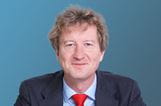Dramatic pause in global Special Purpose Acquisition Companies (SPACs) clouds the outlook
Related people
Headlines in this article
Related news and insights
Publications: 03 April 2024
Chief Information Security Officers and cyber whistleblowing: considerations for PE firms
Publications: 21 March 2024
Publications: 21 March 2024
Publications: 21 March 2024
The extraordinary boom in U.S. SPAC formations continued in Q1 but declined steeply from April onwards. Few believe the trend is over, but a period of greater uncertainty seems likely. SPACs are now making their presence felt in both Europe and Asia, although not at the pace seen in the U.S.

As 2021 began, it looked certain that the boom in the formation of SPACs, particularly in the U.S., was set to continue on the extraordinary trajectory seen last year. Indeed, Q1 saw 310 SPACs formed globally, raising USD95.5 billion through SPAC IPOs. But that activity went into steep decline in Q2, with just 76 SPAC IPOs globally raising a total of just USD14.6bn.
Global SPAC IPO activity, H1 2021

 Data provided by Refinitiv. Note: Figures represent deals announced between 1 January and 30 June 2021.
Data provided by Refinitiv. Note: Figures represent deals announced between 1 January and 30 June 2021.
Inevitably, that led sceptical market commentators to wonder whether the SPAC boom had turned to bust or, more likely, whether SPAC transactions were simply heading for greater uncertainty after a period of explosive growth.
SPACs are not a new phenomenon. They first emerged in the 1990s. But they have ballooned in the last 18 months, particularly in the U.S., where over 90% of SPAC activity is concentrated.
They provide an alternative route to the traditional IPO for private companies to seek a public listing, and, under the right market conditions, offer rich returns for sponsors and investors alike.
SPACs, also known as blank cheque companies, raise finance through an IPO with the intention of later finding an appropriate target to acquire within a limited timeframe, usually 24 months.
The target is not identified at the time of the IPO, although sponsors may well have the expertise, and may express an intention, to target specific markets and sectors.
Once a target has been identified and acquired, it is merged with the SPAC and takes on its public listing – a process called the de-SPAC. Often at this stage a proportion of initial investors will pull out, their place being taken by so-called PIPE – Private Investment in Public Equity – investors or private investors in public equity, with the PIPEs providing a form of validation for the value put on the target company, and allowing the SPAC to acquire a larger target than could be bought with the IPO funds alone.
It’s important to note that while SPAC IPOs have gone into a period of decline, the process of de-SPACing is continuing apace, as SPACs aggressively seek targets to acquire.
Why the decline in U.S. SPAC IPOs?
There are three main reasons why we have seen a sharp fall off in SPAC IPOs in the U.S.:
- a general cooling of equity markets, coupled with specific concerns that technology and other high multiple, high growth businesses, the favoured targets of SPACs, may be vulnerable to rising interest rates as inflation picks up
- mixed performance of SPACs, with some declining in value after the de-SPAC has taken place
- indications from the Securities and Exchange Commission (SEC) on 12 April that most SPAC warrants, issued to SPAC sponsors, should be reclassified as liabilities, possibly forcing a restatement of SPAC financials. The SEC’s new chairman has since suggested that regulations could be introduced to improve the transparency of SPAC disclosures
Few believe that the SEC’s intervention signals the arrival of a hostile regulatory environment for SPACs. But it is clear that Biden administration appointees are intent on keeping a much closer watch on SPACs than was the case under President Trump.
We expect regulation to focus on making sure investors are given sufficient information to understand the risks involved in SPAC structures. In particular, it is likely to tackle the required disclosure relating to the degree to which the sponsor’s promotion – a feature allowing the sponsor to retain up to 20% of the IPO share capital at the point of de-SPACing, along with any warrants it holds – can dilute investor returns substantially.
An overcrowded market
The more immediate risk lies in the fact that there are currently too many SPACs chasing a relative shortage of attractive targets.
The relatively slow pace of de-SPAC transactions means that already stiff competition to identify appropriate targets in an overcrowded market will only intensify.
Sponsors will be loath to have to pay back investors if they fail to find targets in the allotted time, so we expect them to be highly aggressive in their search, including looking to new markets, in Europe and Asia, for possible acquisitions.
In doing so, they are most likely to continue targeting high growth sectors, including technology, fintech, healthcare and renewable energy. Already we are seeing U.S. SPACs competing for prized assets in Europe and making acquisitions in Asia.
A growing trend in Europe and Asia
SPACs are now making their presence felt in both Europe and Asia, although they have not grown at anything like the pace we have seen in the U.S.
In Europe, Amsterdam set the pace for SPAC formation and we were involved in launching the first four in this market.
These early transactions have set the pace for further growth, with the AFM, the Dutch regulator, and Euronext Amsterdam, the Dutch stock exchange, accommodating SPAC formation repeatedly to fit local requirements. With the precedents set, the expectation is that the Amsterdam exchange may see a further 10 to 15 SPACs formed over the summer, representing a fraction of the wider European IPO market and easily absorbable by the market.
Luxembourg has established itself as a centre for completing the regulatory documentation for SPAC IPOs, such that the SPACs that have been created there have been “passported” under EU regulations and are listed on the Frankfurt exchange.
Italy has a well developed SPAC model, but it is aimed at the domestic market and differs from the international model. Meanwhile, the UK has talked of amending its listing requirements to allow for SPAC formations, although there is growing concern that the London market may have missed the boat.
There are increasing signs of SPAC activity in the Asia Pacific region, with most of the recent activity focused on de-SPAC transactions. This includes the world’s biggest SPAC acquisition, which saw Grab, the Singapore-based rideshare, food delivery and online banking Super App, going public in a merger with the Altimeter Growth Corporation, valued at USD40bn.
SPAC interest centres on the high number of Unicorn tech companies, valued at over USD1bn in the region, particularly in Indonesia. Here, two leading players, the GoJek rideshare and financial services group and Tokopedia, the e-commerce retailer, have merged to form the GoTo Group. The combined group intends to seek a dual listing later this year, although to do so may require reforms of Indonesian capital market and listing rules.
We have seen a few tech-specific SPACs formed to target the region, and regulators in Singapore, Hong Kong and Jakarta have mooted the possibility of creating SPAC regimes for domestic companies.
Asia is a prime destination for SPACs given the slew of possible de-SPAC targets that operate in the region, which benefit from Asia’s growth trajectory. Singapore, for instance, has issued its highly anticipated draft rules on SPACs. The industry has shown keen interest, with many hoping final rules will be implemented by autumn, and a successful listing occurring soon thereafter. A successful SPAC listing in Asia will undoubtedly be a catalyst for more SPAC listings across the region.
Questions for target companies
For target companies there are clear pros and cons to pursuing a SPAC deal as opposed to taking the conventional IPO route.
A SPAC amalgamation may simplify the process of achieving a listing, particularly the lengthy process of preparing prospectuses. But it will not necessarily be quicker or less costly, particularly if the eventual valuation achieved is more disappointing than hoped for.
Traditional IPOs may take up to nine months to prepare. The success of the listing will be dependent on market conditions on the days surrounding that distant listing date, and many listings get abandoned at the last minute due to poor market conditions. SPAC transactions provide a greater degree of certainty in that regard.
Targets do have the flexibility of waiting to decide which route to pursue, keeping both the IPO and SPAC options open. For example, one of the first SPACs on the Amsterdam market completed a de-SPAC transaction in February 2020, a couple of months after the target had been forced to abandon a previously planned IPO.
Aiming for a listing on the U.S. capital markets, the most liquid in the world, has obvious attractions for potential targets based elsewhere in the world. But there are potential downsides too, not least being propelled into a heavily regulated market with tough reporting and governance rules to be met. It won’t suit all businesses and those determined to attract U.S. investors can still do so through other exchanges.
Whatever the route chosen, it is vital that in the run up to either an IPO or a SPAC transaction, target companies devote proper time and resources to preparing themselves for the considerable rigours of life as a listed company. In particular it is vital to make sure that financial reporting and management information systems are up to scratch.
Will the uncertainty persist?
The outlook for SPAC formation has undoubtedly become more clouded, and activity is likely to remain closely linked to equity market conditions, ebbing and flowing accordingly.
Though some regulators are clearly pleased to see some of the heat being taken out of the market, the overall regulatory environment in key jurisdictions remains favourable for SPAC transactions.
SPACs are not going to disappear, but neither are they going to replace the traditional IPO as a route to public listing. Instead they are likely to remain an important item in the corporate finance toolkit, and will be particularly relevant to companies, such as technology targets, with a high growth story, as we discuss in the Tech companies and SPACs see interests align article.
SPACs will, however, need to confront some key challenges to retain their relevance.
They will need to address the dilution effect caused by the sponsor’s promote or carried interest.
The effect of this has been disguised in the past both by large PIPE investments at the point of the de-SPAC transaction and by the strength, until recently, of equity markets. In more uncertain times, sponsors will have to work harder to create value for investors to justify their promote.
A more fundamental issue is the fact that a high proportion of investors exit at the time of the de-SPAC to be replaced by PIPE or other financing. Sceptics could argue that these initial investors, far from being blind pool investors looking for a target to acquire, are merely keeping the seat warm in return for the warrant they are allowed to keep after exiting.
If regulators decide this is indeed what is happening, there is a chance they could push for rule changes that would limit the ability of the de-SPAC company to inherit the original SPAC’s registration and listing.
Issues such as these suggest that the current uncertainty is likely to persist for some time.







